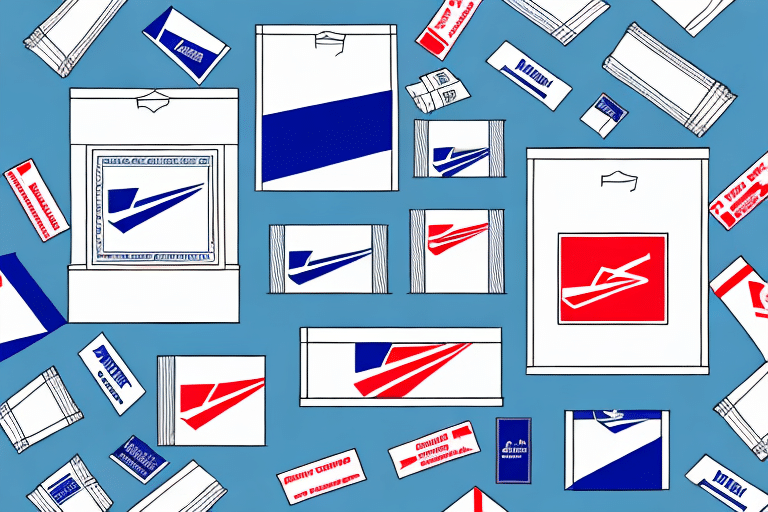Introduction to Shipping Options: USPS vs FedEx
When it comes to shipping, finding the most cost-effective and reliable carrier is essential. Two of the most popular choices in the United States are the United States Postal Service (USPS) and Federal Express (FedEx). Both providers offer a range of services catering to various shipping needs, but understanding their differences can help you make an informed decision about which is cheaper and more suitable for your requirements.
Understanding Shipping Costs and Factors
Shipping costs are influenced by several factors that can significantly impact the total expense of your shipment. Below are the key elements that affect shipping prices:
- Weight and Dimensions: Heavier and larger packages typically cost more to ship. Both USPS and FedEx use dimensional weight pricing for oversized packages.
- Distance: The farther the package needs to travel, the higher the cost. Domestic shipments within the U.S. generally cost less than international shipments.
- Delivery Speed: Faster delivery options, such as overnight or two-day shipping, come at a premium compared to standard ground shipping.
- Insurance and Tracking: Additional services like insurance, signature confirmation, and detailed tracking can increase the overall cost.
- Package Type: Fragile or hazardous materials may require special handling, affecting the shipping price.
- Seasonal Demand: Peak seasons, such as holidays, often see increased shipping rates due to higher demand.
Understanding these factors can help you better estimate shipping costs and choose the most economical options for your needs.
USPS Shipping Options and Rates
The United States Postal Service (USPS) offers a variety of shipping options tailored to different needs and budgets. Key services include:
1. First-Class Mail
Ideal for lightweight packages (up to 15.99 ounces), First-Class Mail is a cost-effective option for small shipments. It typically takes 1-3 business days for delivery within the U.S.
2. Priority Mail
Priority Mail offers faster delivery (1-3 business days) for packages up to 70 pounds. It includes free USPS-provided packaging and tracking.
3. Priority Mail Express
The fastest USPS service, Priority Mail Express guarantees overnight delivery to most U.S. locations, including PO boxes. This service includes tracking and insurance up to $100.
4. Flat-Rate Options
USPS provides flat-rate boxes and envelopes, allowing you to ship items at a fixed price regardless of weight (up to 70 pounds) or destination. This is particularly beneficial for heavier or bulky items.
For the most accurate and up-to-date rates, visit the official USPS Shipping Rates page.
FedEx Shipping Options and Rates
FedEx is renowned for its reliable and expedited shipping services. Key services include:
1. FedEx Ground
FedEx Ground is a cost-effective option for shipping packages within the U.S. It typically delivers within 1-5 business days, depending on the destination.
2. FedEx Express Saver
Express Saver offers delivery in 3 business days by 4:30 PM to most U.S. addresses, including residential delivery. It provides tracking and limited insurance.
3. FedEx Standard Overnight
Standard Overnight guarantees next-business-day delivery by 3 PM to most U.S. addresses. This service includes tracking and enhanced handling.
4. FedEx International Services
FedEx offers a range of international shipping options, including International Economy and International Priority, catering to various delivery speeds and budgets.
For detailed and current rates, refer to the official FedEx Shipping Services.
Comparing Domestic and International Shipping Rates
Choosing between USPS and FedEx often depends on whether you're shipping domestically or internationally. Here's a general comparison:
Domestic Shipping
| Package Weight | USPS First Class Mail | USPS Priority Mail | FedEx Ground | FedEx Express Saver |
|---|---|---|---|---|
| 1 lb. | $3.01 | $7.02 | $8.32 | $10.70 |
| 5 lbs. | $7.16 | $16.40 | $12.25 | $18.94 |
| 10 lbs. | $10.60 | $23.80 | $16.50 | $28.59 |
For detailed comparisons, it’s advisable to use the shipping calculators provided by USPS and FedEx.
International Shipping
| Package Weight | USPS First Class Mail International | USPS Priority Mail International | FedEx International Economy | FedEx International Priority |
|---|---|---|---|---|
| 1 lb. | $15.05 | $40.68 | $34.70 | $66.80 |
| 5 lbs. | $41.80 | $92.10 | $91.55 | $142.65 |
| 10 lbs. | $63.65 | $148.80 | $135.80 | $213.45 |
International shipping rates can vary widely based on destination and service level. It’s recommended to consult the official USPS International Services and FedEx International Shipping pages for the most accurate information.
Additional Fees and Considerations
Beyond the base shipping rates, both USPS and FedEx may charge additional fees depending on the specifics of your shipment. Common additional fees include:
- Oversize Package Fees: Charges for packages that exceed standard size limits.
- Remote Area Surcharges: Extra fees for deliveries to remote or rural locations.
- Customs Fees: Applicable to international shipments, covering import duties and taxes.
- Insurance Fees: Costs for added insurance coverage beyond the carrier’s included limits.
- Signature Confirmation Fees: Charges for requiring a signature upon delivery.
It’s important to review all potential fees on the carrier’s official website or by consulting with their customer service to avoid unexpected costs.
Pros and Cons of USPS and FedEx
United States Postal Service (USPS)
- Pros:
- Cost-effective for lightweight and smaller packages.
- Offers flat-rate packaging options.
- Free package pickup services available.
- No fuel surcharges or residential delivery fees.
- Cons:
- Delivery speed may be slower compared to FedEx for certain services.
- Limited international tracking compared to FedEx.
- Customer service response times can be longer.
Federal Express (FedEx)
- Pros:
- Specializes in overnight and expedited shipping services.
- Offers a money-back guarantee on deliveries.
- Extensive global network with reliable international shipping.
- Provides detailed tracking and customer support.
- Cons:
- Can be more expensive for lightweight or non-urgent shipments.
- Additional fees may apply for certain services.
- Does not typically offer free package pickup without a business account.
Choosing the Most Cost-Effective Shipping Option
To determine the most affordable shipping option between USPS and FedEx, consider the following best practices:
- Assess Package Details: Consider the weight, dimensions, and value of your package to select the most suitable service.
- Compare Delivery Speeds: Choose a delivery speed that aligns with your timeline and budget.
- Utilize Flat-Rate Services: Flat-rate boxes can offer significant savings for heavier items.
- Check for Discounts: Both carriers offer discounts for bulk shipments, business accounts, or through affiliated programs.
- Calculate Additional Fees: Factor in any potential extra costs to get an accurate comparison of total shipping expenses.
- Use Online Shipping Calculators: Utilize the shipping calculators on the USPS and FedEx websites to estimate costs based on your specific shipment details.
Tips for Saving Money on Your Next Shipment
Implementing the following strategies can help reduce your shipping costs:
- Optimize Packaging: Use appropriately sized boxes to avoid paying for unnecessary space.
- Prepaid Labels: Purchase shipping labels online to take advantage of discounted rates.
- Consolidate Shipments: Combine multiple shipments into a single package when possible to save on postage.
- Leverage Third-Party Services: Platforms like ShipStation or Stamps.com can offer competitive rates and additional features.
- Monitor Seasonal Trends: Shipping rates can fluctuate based on demand, so plan your shipments during off-peak times when rates may be lower.
- Negotiate Rates: If you are a frequent shipper, contact the carrier to negotiate better rates based on your volume.
Conclusion: Which Option is Right for You?
Determining whether USPS or FedEx is the cheaper shipping option depends on your specific needs and circumstances. If you're shipping lightweight packages or require flat-rate options, USPS may offer more economical solutions. On the other hand, if you need expedited shipping, enhanced tracking, or are shipping heavier packages, FedEx might be the better choice.
It's crucial to evaluate the weight, size, destination, and urgency of your shipments, as well as any additional services you may need. By carefully comparing the offerings of both USPS and FedEx and utilizing available tools to estimate costs, you can make informed decisions that balance cost with service quality.
For the most accurate and up-to-date information, always refer to the official USPS and FedEx websites.






















